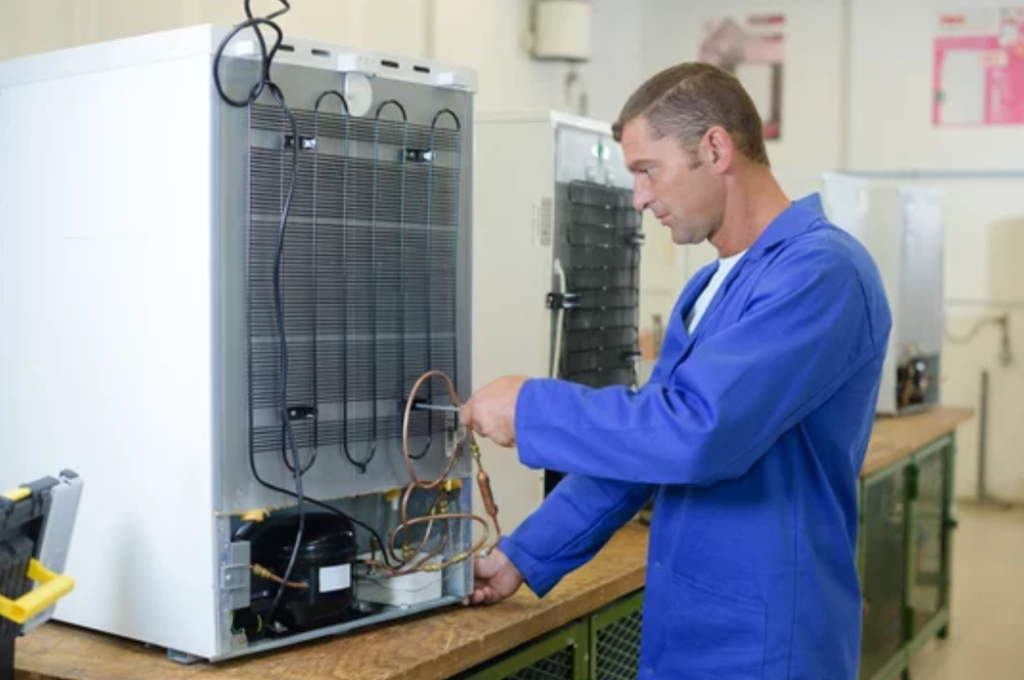Refrigerators are crucial appliances in any household, ensuring that our food stays fresh and our drinks cold. However, when a fridge malfunctions, it can be both inconvenient and costly. Understanding common refrigerator issues and their solutions can help you address problems promptly and potentially avoid expensive repairs. This guide covers frequent fridge issues and offers practical solutions for effective refrigerator repair.
1. Temperature Fluctuations
One of the most common refrigerator problems is fluctuating temperatures. If your fridge isn’t maintaining a consistent temperature, your food might spoil more quickly or freeze unexpectedly. There are several potential causes for this issue:
- Dirty Condenser Coils: Over time, dust and debris can accumulate on the condenser coils, causing the fridge to work harder and struggle to maintain the proper temperature. To address this, turn off the refrigerator, unplug it, and clean the coils with a coil brush or a vacuum.
- Faulty Thermostat: The thermostat controls the temperature inside the fridge. If it’s malfunctioning, it may not accurately detect the temperature, leading to inconsistent cooling. Replace the thermostat if it’s not functioning properly.
- Broken Door Seal: A damaged or worn door seal can allow warm air to enter the fridge, affecting its cooling efficiency. Inspect the seal for tears or gaps, and replace it if necessary.
2. Excessive Noise
Refrigerators are not silent appliances, but excessive or unusual noises can indicate a problem. Common sources of noise include:
- Faulty Evaporator Fan: The evaporator fan circulates cold air throughout the fridge. If it’s noisy, it might be obstructed or malfunctioning. Check for any ice build-up around the fan and clear it if present. If the noise persists, the fan might need to be replaced.
- Compressor Issues: The compressor is a vital component responsible for cooling the refrigerator. If you hear clanking or buzzing sounds, it might be failing. In this case, it’s best to consult a professional for fridge repair, as compressor issues can be complex and costly.
3. Leaking Water
Water pooling inside or around your refrigerator can be a sign of several issues:
- Clogged Defrost Drain: The defrost drain carries water from the melting ice to a drain pan underneath the fridge. If it becomes clogged, water can accumulate inside the fridge. Use a pipe cleaner or a small brush to clear the drain.
- Broken Water Line: If your fridge has an ice maker or water dispenser, check the water line for leaks. A damaged water line can cause water to leak onto the floor. Replace the water line if you find any cracks or breaks.
4. Ice Maker Problems
An ice maker is a convenient feature, but it can sometimes malfunction. Common issues include:
- Ice Maker Not Producing Ice: This could be due to a clogged water filter or an issue with the water supply. Check the water filter and replace it if it’s clogged. Ensure the water supply line is connected and not blocked.
- Ice Maker Jams: Ice makers can sometimes jam due to ice buildup. If this happens, turn off the ice maker and manually remove any ice obstructing the mechanism. If the problem continues, the ice maker might need repair or replacement.
5. Electrical Issues
Refrigerators require a stable power supply to function correctly. Electrical issues can manifest as:
- Fridge Not Turning On: Ensure the refrigerator is properly plugged in and that the outlet is working. If the outlet is functional, check the fridge’s internal fuse or circuit breaker. If these components are intact and the fridge still doesn’t turn on, the problem may lie within the appliance’s electrical system, requiring professional assistance.
- Intermittent Power: If the fridge turns off and on intermittently, it might be due to a loose connection or a faulty relay. Inspect the power cord and connections for any signs of damage and replace any defective parts.
6. Overcooling
In some cases, the refrigerator might become too cold, causing food to freeze. Possible causes include:
- Incorrect Temperature Settings: Check the temperature settings and adjust them if necessary. The ideal refrigerator temperature is around 37°F (3°C).
- Faulty Temperature Control Board: If adjusting the settings doesn’t help, the temperature control board might be malfunctioning. This component regulates the cooling cycle and may need replacement if it’s not working correctly.
Conclusion
Understanding these common refrigerator issues and their solutions can help you maintain your appliance and address problems before they escalate. Regular maintenance, such as cleaning the condenser coils and checking the door seals, can prevent many issues. For more complex problems, especially those involving electrical components or the compressor, it’s wise to seek professional fridge repair services. By staying informed and proactive, you can ensure your refrigerator continues to serve you reliably and efficiently.


